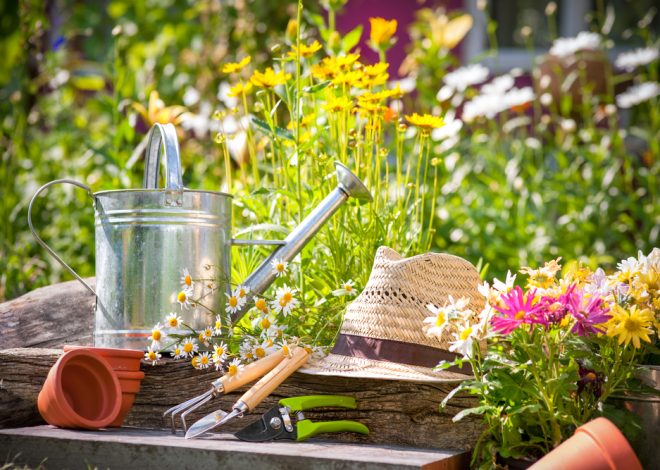
Deadheading Butterfly Bush: The Key to Keeping It Blooming
Butterfly bushes are a gardener’s dream. Their long panicles of brightly colored flowers attract fluttering butterflies and hummingbirds all season long. But deadheading butterfly bush is essential to keep your butterfly bush happily blooming from spring through fall. What is deadheading? Simply put, it’s the removal of spent blooms from a plant. It’s an essential maintenance task for butterfly bushes that encourages continual new growth and flowering. Follow these tips to learn when and how to deadhead butterfly bush for maximum blooms.
Why Deadheading Butterfly Bush is Key
Left to their own devices, Butterfly bushes will faithfully produce flowers throughout the growing season. But as each flower finishes blooming, it leaves a fading bloom that eventually forms a seed pod.
This is all a natural part of the plant’s reproductive cycle. However, allowing seed pods to remain on the plant signals to the butterfly bush that reproduction is underway. As a result, blooming slows down or stops entirely as the plant puts its energy into forming seeds.
By removing spent blooms, you stop the production of seed pods. This tricks the plant into thinking the blooming season is never-ending. It will continuously produce new buds and flowers to reproduce.
Promotes Frequent Blooming
Diligent deadheading can mean the difference between a butterfly bush covered in flowers for three months instead of 6 weeks. When you remove spent blooms every 7 to 10 days, your plant will free up energy commonly used in seed production. It then redirects that energy into forming additional flower buds to draw in potential pollinators.
Without deadheading, blooming gradually tapers off. But with this simple maintenance, a single bush can produce hundreds of flower spikes in one season.
Encourages Healthy Growth
In addition to promoting prolific flowering, deadheading keeps your butterfly bush healthy and lush. As flowers fade, the small stem attaching the bloom to the branch dies. These dead stubs can serve as entry points for pests and diseases if left in place.
Regularly removing spent blooms eliminates potential problem areas. It also keeps your plant looking tidy and encourages the development of side shoots. This results in a fuller, more robust butterfly bush.
Prolongs Total Bloom Time
Butterfly bushes tend to bloom most heavily in mid to late summer. However, diligent deadheading extends both early and late season flowering.
With peak bloom time stretched out over a more extended period, you’ll enjoy more total weeks of flowering. Deadheading also resets the clock so blooms happen sequentially instead of simultaneously.
Improves Flower Production
As a butterfly bush ages, it may produce smaller blooms on thinner stems. Regularly deadheading encourages the plant to focus resources on generating vigorous new growth.
The fresh shoots and stems will be sturdy enough to support large, dramatic plumes. So, continued deadheading improves both the size and abundance of the flowers.
When to Deadhead Butterfly Bush
Timing is everything when it comes to effective deadheading. To reap the full benefits, you need to remove spent blooms:
- At the right stage of bloom
- With proper frequency
- During the optimal season
Follow these guidelines to determine the best time to deadhead your butterfly bushes.
Deadhead Early On
You’ll get the most bang for your buck by deadheading flowers while they’re still mostly intact. Removing them before seed pods have formed or the petals turn brown and shrivel is best.
If you wait until blooms are wholly spent, some energy has already been wasted on aborted seed production. Early deadheading ensures all the plant’s resources go toward new buds instead.
Check your butterfly bushes at least once a week and remove any flowers starting to fade. Blooms that are mostly wilted but still have some color can be selectively pinched or snipped off.
Aim to get them off before yellow or brown coloring sets in. The earlier you can deadhead, the better you can promote repeat flowering.
Every 7-10 Days is Ideal
During peak butterfly bush bloom season, plan to deadhead every 7-10 days. This ensures you catch each flower spike when it’s just starting to decline but before it expires.
Too long between deadheading sessions means you’ll miss the ideal stage and sacrifice some potential rebloom. But keeping up with it weekly prevents seed formation plus removes any dead stem tissue.
Set a reminder to walk through and inspect plants on the same day each week. It takes a few minutes to pinch off or clip back spent blooms. Consistency is critical for maximum flower production.
Stop Deadheading by Early Fall
Butterfly bushes need about eight weeks to harden off before winter dormancy. During this time, you should no longer deadhead plants.
By early September or 6-8 weeks before your average first fall frost date, allow flowers to remain until they form seed pods. This cues the plant to slow down growth in preparation for cooler weather.
It also lets your bush complete its entire reproductive lifecycle before going dormant.
If you continue deadheading into fall, you risk increased winter dieback. Letting seeds develop helps the plant stockpile the energy it needs to survive cold weather.
How to Deadhead Butterfly Bush
When deadheading a butterfly bush, focus on removing the entire spent flower spike to the right above a node or set of leaves. There are two easy methods:
Pinching Back by Hand
Pinching off spent blooms is quick and straightforward. Use your fingertips to snap or pin each faded flower spike where it meets the stem.
Remove the entire spike to just above the first leaf nodes to encourage a new shoot to generate there. Pinching off flowers leaves behind a cleaner look than cutting.
Trimming with Pruners
For larger bushes with thicker stems, bypass pruners are safer and easier to use than pinching. Make cuts on a slant above the first set of leaves beneath each flower.
Pruners give you more precision and control than pinching. It also speeds up deadheading on overgrown plants.
Focus on Older Blooms
Butterfly bush blooms progress along each flower spike, opening from bottom to top. As you deadhead, prioritize removing the oldest, lower flowers first.
These will fade and form seed pods sooner than the newer blooms toward the top of the spike. Take off the bottom portion of the spent spikes and leave fresher flowers to continue opening.
Remove the Entire Spike for Uniform Regrowth
To encourage symmetrical, even growth from nodes on each side, removing the entire flower spike back to the stems and leaves is best.
Taking off just a portion can activate buds on one side more than the other. For complete, balanced new shoots, start by pinching the whole spike.
Leave Some Seed Pods in the Fall
As summer transitions to fall, you can begin allowing some blooms to go to seed. Butterfly bushes need time to set pods before winter, which cues dormancy.
Remove only the lower half or two-thirds of each spike when deadheading in early autumn. Leave the rest intact so some seed pods develop before cold weather arrives.
Deadheading Butterfly Bushes for Bumper Blooms
Deadheading your butterfly bushes is easy and rewarding with the right technique and timing. The small effort pays off with vibrant flowers over an extended bloom season. Try these pro tips for maximum success:
- Prune back overgrown or damaged branches in spring to shape plants and stimulate new growth.
- Deadhead-established plants start in late spring as soon as flowers fade. Stay vigilant with weekly deadheading all summer long.
- For new plantings, wait to deadhead until buds set in midsummer. Let the young bush focus energy on establishment before removing blooms.
- Always pinch or cut back each flower stalk just above the leaf nodes to encourage balanced regrowth.
- Remove spent blooms in the morning before heat builds to avoid stressing the plant.
- Consider supplemental monthly fertilizing to fuel energetic reblooming after deadheading.
- Monitor for pests like spider mites that may flourish on tender new growth and treat ASAP.
- Be prepared to prune butterfly bushes back substantially in late winter to control size and maintain thick growth.
With simple yet strategic deadheading, your butterfly bushes will thank you with lively flowers that attract winged visitors from spring through fall. The glowing blossoms will brighten borders and containers while creating a low-maintenance landscape focal point.
Frequently Asked Questions
What is the best tool for deadheading butterfly bush?
For large, mature plants, bypass pruning shears are ideal for quickly snipping off spent blooms. Pinching by hand works well on smaller bushes and leaves behind a clean look.
When should I stop deadheading butterfly bush for winter?
Discontinue deadheading and let blooms form seed pods starting 6-8 weeks before your first expected fall frost. This gives the plant time to prepare for dormancy.
How much do I prune back butterfly bushes for winter?
In late winter or early spring, prune mature butterfly bush stems back by at least 1/3 to 1/2 their original height. This stimulates fresh growth from the bottom up for maximum flowering. Even more rejuvenation pruning can be done every 2-3 years.
Can I cut butterfly bushes to the ground?
Yes, cutting them back to the ground or very near the ground level is possible. This severe pruning every 2-3 years results in incredibly lush, vigorous regrowth. Just be careful not to prune in the fall before winter dormancy.
When should I start deadheading new butterfly bushes?
For first-year butterfly bush plantings, wait until midsummer to begin deadheading. Let the young plant establish roots and foliage before removing any blooms. Start deadheading existing mature plants as soon as flowers start to fade.
How do I encourage more flowers on the butterfly bush?
Frequent deadheading is the best way to maximize blooms. Also, ensure plants receive at least 6 hours of sun and regularly prune in late winter. Monthly fertilizing with a balanced fertilizer aids flowering as well.
Conclusion
Butterfly bushes are prized for their long seasons of vibrant, nectar-rich flowers. But they require simple maintenance to thrive and bloom their best in your landscape. By deadheading butterfly bush regularly from spring through fall, you can enjoy wave after wave of colorful blossoms.
Stop removing spent blooms 6-8 weeks before frost so your bushes can harden off. And don’t neglect proper pruning before new growth emerges in spring. Combining deadheading with good seasonal care keeps butterfly bushes flowering happily year after year.
The flowering display of a well-maintained butterfly bush is a sight to behold. Mammoth sunflowers can tower up to an impressive 12 feet, creating a stunning backdrop for the fluttering, busy butterflies that flock to your bush, seeking nourishment from dawn to dusk, and you’ll reap the ongoing rewards of this low-maintenance, wildlife-friendly plant, injecting beauty and color into your garden.







